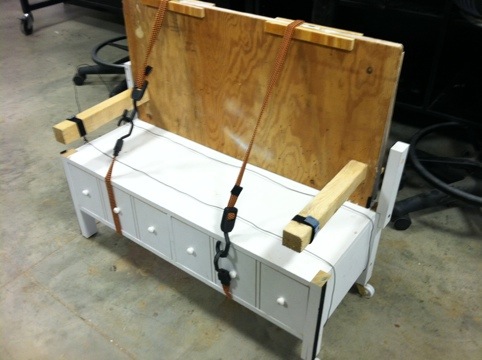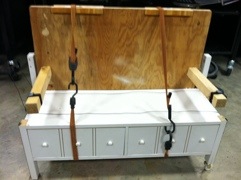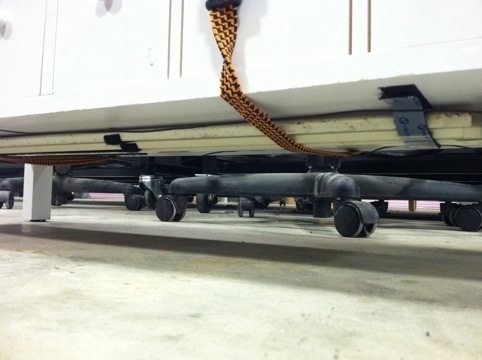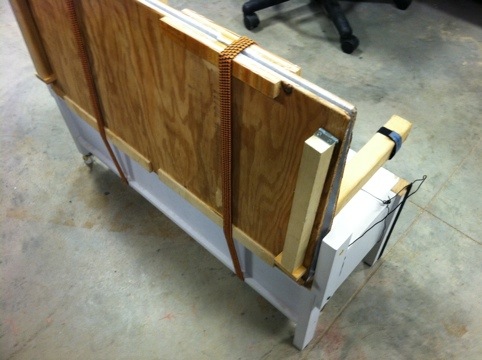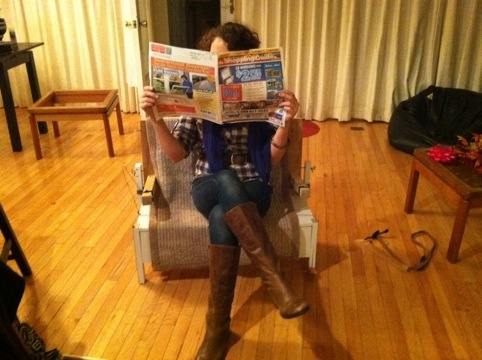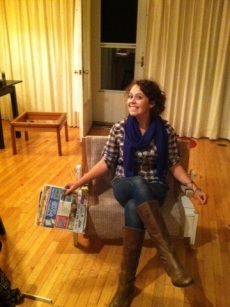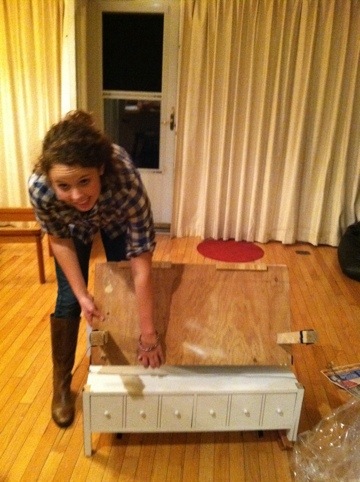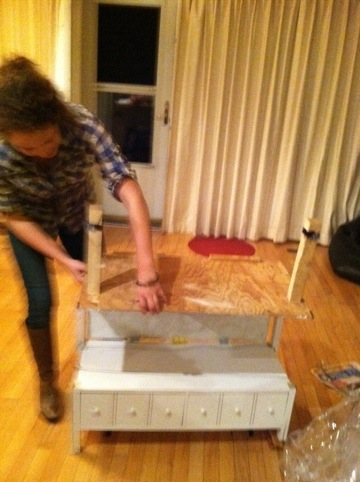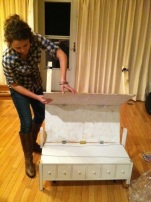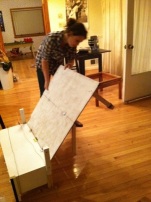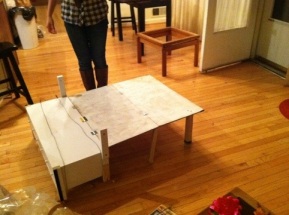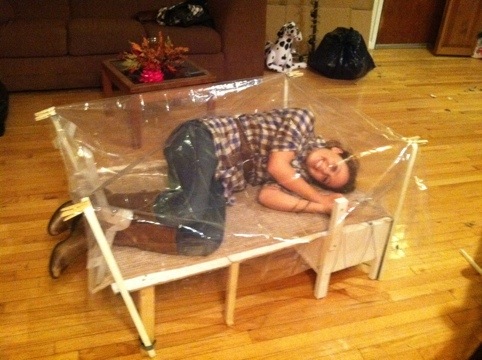Background
The assignment was to create a chair that was also a shelter. At first, I was completely discouraged by the thought of this; I don’t use power tools and I am not an architect. I had no idea where to start with my design until my professor suggested that I start with what I wanted it to look like in the end and from there I sketched and scribbled until finally I had a general idea of what I wanted to do. I did not want to go to the store to buy supplies for this project, I wanted to create something useful out of recycled materials, something that anyone could put together using scraps they found on the street. I started exploring the idea of homelessness and scavenging. What could a homeless person find while wondering the streets? People throw out so many things that may seem too old or too worn but could still effectively serve a different purpose and I wanted to incorporate these things into my design. I wanted to show the audience that one man’s trash really is another man’s treasure.
I wanted to create something portable and reasonably comfortable that provided protection from the elements. I decided that I wanted my chair to fold out into a bed that could be easily covered in the case of rain or snow. I also wanted some kind of storage space so that one could pick everything up and move it from place to place. I decided that using a dresser for a base would be a good place to start.
Process
I began with a dresser drawer that I found at Good Will. I took off the sides of the drawer so that the top was level and changed the lengths of the legs on the bottom so that I was able to attach wheels to both of the legs on one side. I found two pieces of wood in my shed that were about the width of the drawer and decided that they would be good to use for the bed portion of my shelter. I bought hinges (unfortunately, I wasn’t able to get away with finding everything) and sought to attach the two pieces of wood to the drawer. This is where I began to run into some complications.
I found that the pieces of wood that I was using were too thin to support the screws that came with the hinges I purchased so I had to cut additional smaller strips of wood and attached them to the larger pieces with wood glue in order to make the wood thick enough to screw the hinges in to. After I finally attached the two pieces of wood together I faced the challenge of attaching this unit to the drawer. After some maneuvering and two failed attempts I was able to make it work. At this point I had already created and attached a set of foldable legs to one of the large pieces of wood to support the bed but after trying to unfold the unit, I realized that I would need much more support if I wanted to make this part functional. I managed to find a think rectangular piece of wood outside that I cut into two legs (which I was conveniently able to make serve as arm rests as well!). I used a hot glue gun and screws to attach the legs to the shelter. Another problem I had to solve was how to make the backrest of the chair stay up when someone leaned back on it. I ended up attaching some scrap wood that I had cut off of the chair at the beginning, to either side of the backrest and drilling holes in them that were big enough to slide a metal post into that would sit in between the folded wood and support it from falling straight back when pressure was applied.
Once I finished constructing the shelter and made sure that it was stable enough to sit and lay on, I had to figure out how I could provide protection from the elements. I found some old curtain rods in my basement and attached a piece of Velcro to the inside of each one and to the outside corners of my unfolded shelter. These curtain rods would serve as the support for the shelter’s “roof”. I decided that it would be best to use a clear shower curtain as the cover because it is light, water proof and small enough to fit into the storage drawers. I attached the corners of the shower curtain to each of the curtain rods using clothespins and voila!, I had created an instant sun roof for my shelter.
I used wire to create a handle for the shelter so that you could lift up one side and pull the whole unit which moved effortlessly on its wheels, somewhat like a suitcase. The bungee cords were used for transportation purposes, to keep the pieces of the shelter from moving around too much and to keep the drawers from opening. The bungee cords could then be used it its chair form to secure the backrest even further. I also attached two pieces of Velvro to the bottom of the drawer to act as a holder for the curtain rods when they were not in use. I found a rug at Good Will that could be stored in one of the drawers that I used as a cushion for the chair and bed.
Here is my shelter in its portable form:
Here is my shelter in its functional form:
